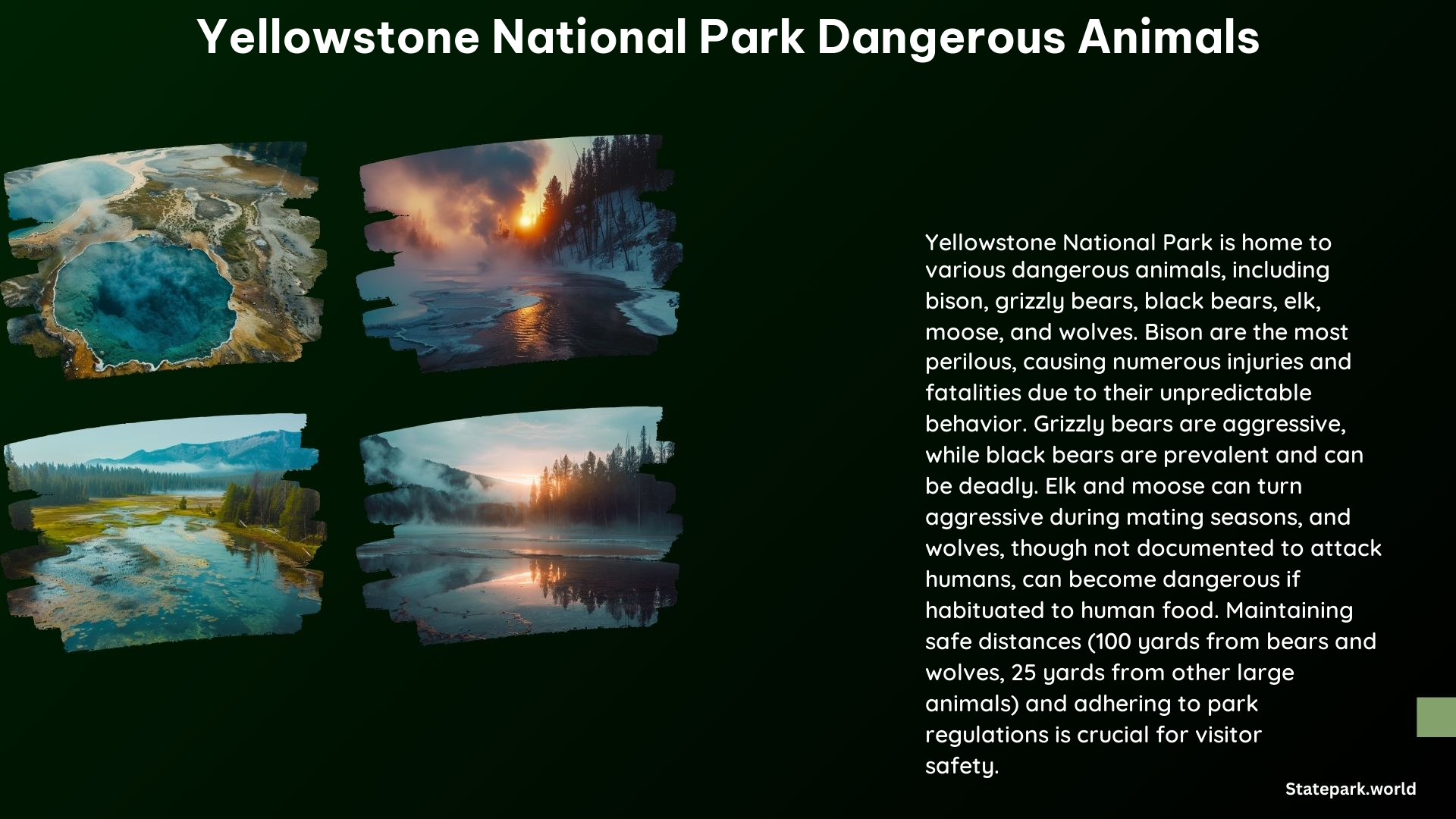Yellowstone National Park is home to a diverse array of wildlife, including some species that can pose a serious threat to human safety. As a national park touring enthusiast, it’s crucial to be aware of the most dangerous animals in Yellowstone and learn how to stay safe during your visit.
Most Dangerous Animals in Yellowstone National Park
1. Bison
Bison are the most abundant large mammal in Yellowstone, with an estimated 10,000-20,000 spending time in the park during the summer. Despite their seemingly docile behavior, bison can be unpredictable and can cause serious harm or even death. Visitors are advised to maintain a distance of at least 25 yards from bison.
2. Grizzly Bears
Grizzly bears are known for their aggressive nature, especially when they feel threatened or when they are protecting their young. There are approximately 150 grizzly bears in Yellowstone, and while attacks are rare, they can be fatal. Visitors should stay at least 100 yards away from grizzly bears.
3. Black Bears
Black bears are also present in Yellowstone and can be aggressive if they feel threatened or if they have access to non-natural food sources. While attacks are rare, they can be serious. Visitors should maintain a distance of at least 100 yards from black bears.
4. Moose
Moose are large and powerful animals that can become aggressive if they feel threatened, particularly during mating season. Visitors should exercise caution around moose and maintain a safe distance.
5. Elk
Elk are abundant in Yellowstone and can become aggressive during mating season. Visitors should be cautious around elk, especially in popular tourist areas, and maintain a safe distance.
6. Wolves
While there are no documented cases of wolf attacks on humans in Yellowstone, habituating them by providing food can lead to dangerous encounters. Visitors should not feed wolves and maintain a safe distance.
Staying Safe from Dangerous Animals in Yellowstone National Park

- Maintain a Safe Distance: Keep at least 25 yards away from large animals like bison, elk, and deer, and at least 100 yards away from bears and wolves.
- Stay in Groups: When hiking or exploring, stay in groups of three or more to reduce the likelihood of an animal attack.
- Make Noise: Make noise while hiking to avoid surprising animals, which can lead to aggressive behavior.
- Keep a Clean Campsite: Keep campsites clean and free of food and trash to avoid attracting animals.
- Follow Park Rules: Follow all park rules and regulations, including staying on designated trails and not approaching or feeding wildlife.
- Be Aware of Your Surroundings: Always be aware of your surroundings and watch for signs of wildlife, such as tracks, scat, or other signs of animal activity.
By following these guidelines and being mindful of the wildlife in Yellowstone, visitors can minimize the risk of encounters with dangerous animals and ensure a safe and enjoyable visit to the park.
References
- National Park Service. (2024). Watch Wildlife – Yellowstone National Park. Retrieved from https://www.nps.gov/yell/planyourvisit/viewanim.htm
- YouTube. (2023). New warnings for tourists about wildlife at Yellowstone National Park l GMA. Retrieved from https://www.youtube.com/watch?v=VGy0Qjd4pTc
- Newsweek. (2022). The Most Dangerous Animals in Yellowstone National Park. Retrieved from https://www.newsweek.com/most-dangerous-animals-yellowstone-national-park-1732750
- Outside Online. (2023). The 9 Most Dangerous Animals In Our National Parks. Retrieved from https://www.outsideonline.com/adventure-travel/national-parks/most-dangerous-animals-in-national-parks/
- National Park Service. (2024). Safety – Yellowstone National Park. Retrieved from https://www.nps.gov/yell/planyourvisit/safety.htm
